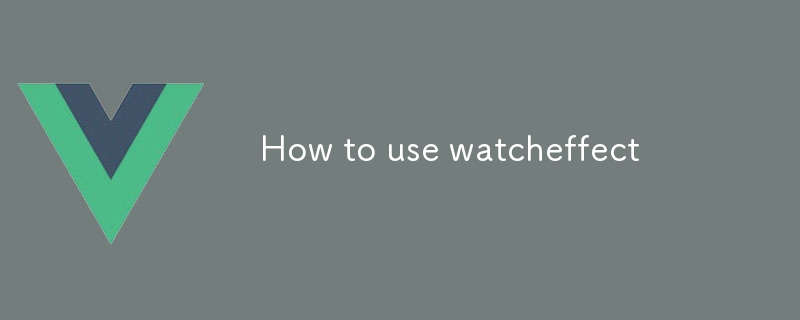watcheffect的用法
- DDD原創
- 2024-08-13 15:33:19458瀏覽
Detecting changes in Angular is essential for reactivity. Watcheffect hook in Angular allows you to monitor specific values or properties and react to changes. This article explains the syntax, usage, and performance implications of Watcheffect. It a

Angular's Watcheffect Syntax and Usage
The Watcheffect in Angular is a hook that allows you to monitor changes in specific values or object properties. Its basic syntax is as follows:
<code class="typescript">@Watcheffect(propertyName or parameterName)
effectCallback(changes: ObservableValue<any>) {}</code>
Detecting Changes in a Reactive Object
To detect changes in a reactive object using Watcheffect, you can use the ngOnChanges lifecycle hook. This hook provides an ngOnChanges property that contains an object with key-value pairs representing the previous and current values of the changed properties. For instance:
<code class="typescript">@Component(...)
class MyComponent {
@Watcheffect("myProperty")
ngOnChanges(changes: SimpleChanges) {
if (changes["myProperty"]) {
// Do something when the property changes
}
}
}</code>
Performance Implications
Watcheffect uses zone.js to intercept property accesses and track changes. While it's an effective way to monitor changes, excessive use can lead to performance issues, especially with large objects or frequent property accesses. Consider using @Input and @Output properties or reactivity helpers like BehaviorSubject or ReplaySubject for better performance in most cases.
Custom Detectors in Watcheffect
Watcheffect also allows you to create custom detectors for specific values or expressions. This can be useful when you need more granular control over what triggers a change detection. To create a custom detector, use the @DetectionStrategy property in the @Watcheffect decorator:
<code class="typescript">@Watcheffect('myExpression', { detectionStrategy: customDetection })
effectCallback(changes: ObservableValue<any>) {}</code>
In the example above, customDetection is a function that takes the input value and returns a tuple of values representing the previous and current states.
以上是watcheffect的用法的詳細內容。更多資訊請關注PHP中文網其他相關文章!

